Seven Questions Over Breakfast with John Hendrix
 April 24th, 2012 by jules
April 24th, 2012 by jules
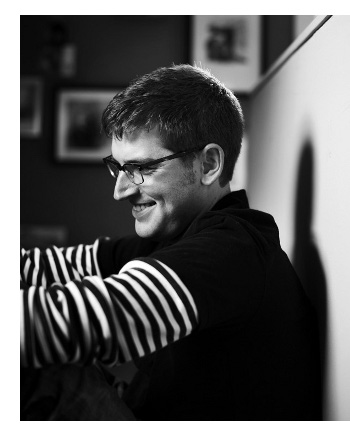 I’ve written about author/illustrator John Hendrix previously at 7-Imp. Today, though, he’s joining me at the breakfast table, his breakfast-of-choice being only “about five gallons of coffee.” (I can go for that. I’m sturdy with my coffee intake. I feel confident I can handle it.)
I’ve written about author/illustrator John Hendrix previously at 7-Imp. Today, though, he’s joining me at the breakfast table, his breakfast-of-choice being only “about five gallons of coffee.” (I can go for that. I’m sturdy with my coffee intake. I feel confident I can handle it.)
And I believe I’ve previously used the word “galvanic” when describing his art.
Well, it is. Have you seen his artwork?
His sweeping spreads are indicative of an artist who started out in editorial illustration — with spreads, Kirkus once wrote, that “combine the iconic and the realistic to compress the visual storytelling into one heightened image.” Or “larger-than-life,” if you’re School Library Journal. And it’s true: John knows how to get your attention, as you can see below in the mixed-media illustrations featured today. There’s an edgy, sometimes darker side to his art, too, that makes you look twice. (And, I must mention, he often hand-draws his text, as you can see in some examples below.)
Most recently, John has brought readers the illustrations for Deborah Hopkinson’s A Boy Called Dickens. That was published by Schwartz & Wade in January, and back then I invited John over for a breakfast chat. I may just now be getting to it, but better late than never. He shares art and early sketches below from Hopkinson’s book, as well his other three previously illustrated titles and other art from here and from there.
So, let’s get right to it, and I thank him for visiting.
Jules: Are you an illustrator or author/illustrator?
John: Author/Illustrator and Illustrator, depending on the book.
They had a show celebrating Harry Potter when the final movie came out last summer. Everyone got to pick a scene/theme from the books. I love Harry Potter,
so it was a great thrill to actually imagine some of the characters.”
(Click to enlarge)
Jules: Can you list your books-to-date?
John:
- Abe Lincoln Crosses a Creek by Deborah Hopkinson, 2008
- John Brown: His Fight for Freedom, writer/illustrator, 2009
- Nurse, Soldier, Spy: The Story of Sarah Edmonds, a Civil War Hero by Marissa Moss, 2011
- A Boy Called Dickens by Deborah Hopkinson, 2012
(Click to enlarge spread)
Finally, Dickens and the other boys spill out into the darkness.”
(Click to enlarge spread)
At last Mr. Dickens opens his eyes. Most likely his own pride is hurt—
he is ashamed to see his son on display.”
(Click to enlarge spread)
(Click to enlarge spread)
(Schwartz & Wade, January 2012)
(Click to enlarge cover)
Jules: What is your usual medium, or––if you use a variety—your preferred one?
John: Pen and ink, graphite with washes of fluid acrylics, and colored pencil.
(See here John’s “Digital vs. Handmade” post regarding this image)
Jules: If you have illustrated for various age ranges (such as, both picture books and early reader books OR, say, picture books and chapter books), can you briefly discuss the differences, if any, in illustrating for one age group to another?
John: I’ve done illustration for picture books and for YA chapter books — and rarely change my approach. I think the mark of a good illustration is its clarity. And the nature of clarity requires a kind of universal communication.
everyone else, but she wanted desperately to be one of those going, not one of those staying behind and waving handkerchiefs in a teary good-bye.”
(Click to enlarge spread)
(Click to enlarge)
‘YOU, THERE!’ a thick-set officer called.”
(Click to enlarge)
The Story of Sarah Edmonds, a Civil War Hero
(Abrams, 2011)
(For another spread, see this June 2011 7-Imp post)
(Click cover to enlarge)
Jules: Where are your stompin’ grounds?
John: Saint Louis, Missourah.
Jules: Can you briefly tell me about your road to publication?
John: Got my start in editorial illustration, magazines and newspapers. Started writing my own books for children on the side while I lived in New York, and I’m five years into working with literature for children. Will continue to focus on my picture books for the near future, though I continue to take on a variety of different projects.
by their proper names, and not by their first names or nicknames
like many white people would do.”
(Click to enlarge spread)
with all their hearts, and to love their neighbor just as much,
even if that neighbor was different from them.”
(Click to enlarge spread)
(Click to enlarge spread)
to fight for Kansas. He fought many battles on those windy plains, but it was a dark night along Pottawatomie Creek that made him notorious.”
(Click to enlarge spread)
he took to calling her . . . General Tubman!”
(Click to enlarge spread)
and crossed the Potomac River into Harpers Ferry.”
(Click to enlarge.)
(Click to enlarge.)
(Click to enlarge.)
(Abrams, 2009)
Jules: Can you please point readers to your web site and/or blog?
John: www.johnhendrix.com; www.johnhendrix.blogspot.com.
Twitter! I love Twitter! @hendrixart.

The Corps of the Bare-Boned Plane (Farrar, Straus & Giroux, 2007)
Jules: If you do school visits, tell me what they’re like.
John: Going to schools is something I do two or three times a year, and I always enjoy it. I usually read from one of my books, talk about drawing pictures for a living, and then we always play some sort of drawing game at the end. The one the kids seem to love the most goes like this: I ask them to shout out two animals, and then I draw a mash-up animal of the two. Total laughter every time!
(Click to enlarge spread)
not at the most important moment of his life!”
(Click to enlarge spread)
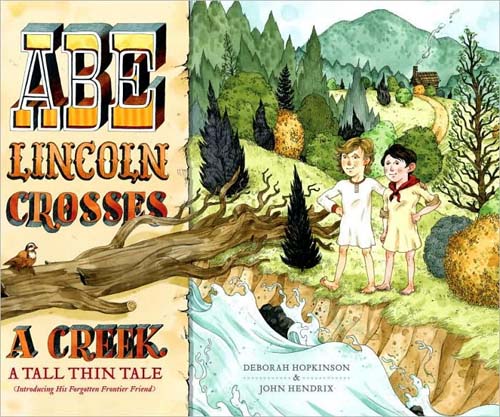
(Schwartz & Wade, 2008)
Jules: If you teach illustration, by chance, tell me how that influences your work as an illustrator.
John: Teaching is a very important part of my life as an artist. The very act of trying to quantify processes that may be, occasionally, entirely intuitive is instructive to both teacher and student. I love being a part of a student’s journey, even in a small way. Introducing them to a new artist that they fall in love with or seeing their visual voice suddenly emerge is very satisfying. Plus, being around younger people is inspiring. They make time for play in ways that professionals might see as wasteful.
Jules: Any new titles/projects you might be working on now that you can tell me about?
John: YES, a few new projects are in the works. But none I can chat about just yet. SOON!

(Simon & Schuster); read here for John’s reaction to the assignment
 Okay, the first gallon of coffee is on the table, and it’s time to get a bit more detailed with six questions over breakfast. I thank John again for visiting 7-Imp.
Okay, the first gallon of coffee is on the table, and it’s time to get a bit more detailed with six questions over breakfast. I thank John again for visiting 7-Imp.
1. Jules: What exactly is your process when you are illustrating a book? You can start wherever you’d like when answering: getting initial ideas, starting to illustrate, or even what it’s like under deadline, etc. Do you outline a great deal of the book before you illustrate or just let your muse lead you on and see where you end up?
John: The first thing that happens with any books is a bunch of looking. I collect visual sources and references, looking for inspiration in color, mood, setting, and character design. It is tempting to rush through this phase of ‘doing nothing,’ but I’ve found you have to spend significant time doodling and absorbing some visual material before you can start outputting drawings and sketches. My books begin as tiny thumbnails, where I make a draft of the entire book in miniature.
My working process is completely iterative. It is built on trying everything, rather than waiting for the perfect embodiment of any one idea.
{Ed. Note: Below are sketches and final spreads (without text) from Deborah Hopkinson’s A Boy Called Dickens (Schwartz & Wade, January 2012).}

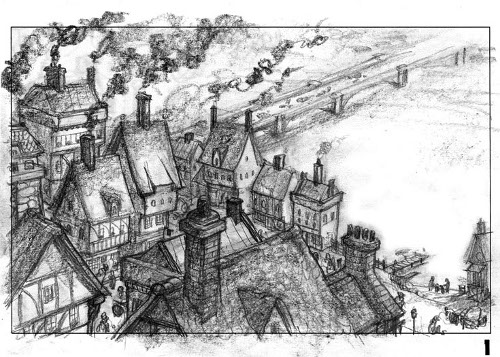
We are here to search for a boy called Dickens. …”
(Click to enlarge)
(Click to enlarge)
and closes his eyes, picturing the scene in his mind. …”
(Click to enlarge)
2. Jules: Describe your studio or usual work space.
John: My studio just moved from my attic to a big finished space in my basement. I work at home, mainly because I work so late each night and it makes it easier to spend time with my kids when I can run up the stairs and be ‘home’. I have a large table for drawing and painting, a desk for my digital stuff, and a huge light table. Plus giant piles of books that are growing like stalagmites.

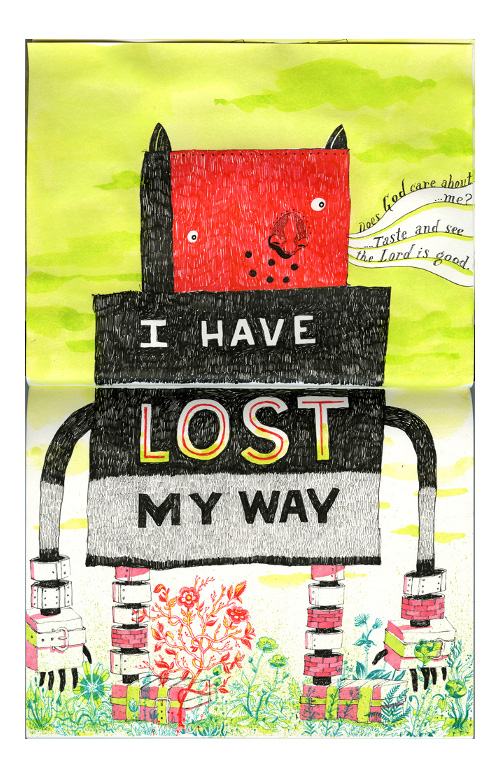

3. Jules: As a book-lover, it interests me: What books or authors and/or illustrators influenced you as an early reader?
John: My list of early influences are not unusual. They include the books of David Macaulay — Castle, Cathedral, and The Way Things Work.

I really have a vivid memory of reading The Hobbit and can still picture the illustrations from that book.
I played a lot of board games that encouraged storytelling and creating characters (read: Dungeon & Dragons).
C.S. Lewis’s Narnia books changed my life, and I still enjoy reading them.
4. Jules: If you could have three authors or illustrators—whom you have not yet met—over for coffee or a glass of rich, red wine, whom would you choose? (If they’re deceased, I won’t tell.)
John: Brian Selznick, Bill Watterson, J.K Rowling. (She draws, so she counts.)
From Julia Rothman’s, Jenny Volvovski’s, and Matt Lamothe’s The Where, the Why, and the How: 75 Artists Illustrate Wondrous Mysteries of Science (Chronicle Books, 2012); See more info here
(Click to enlarge)
5. Jules: What is currently in rotation on your iPod or loaded in your CD player? Do you listen to music while you create books?
John: How to even answer this one? Yes, I listen to a lot of music…any selection of artists for this interview will becomes a weird exercise in desert-island list making, which is making me self-conscious.

See more info here and here)
But I also listen to a lot of audio books. Just finished the The Hunger Games on audio. My wife and I argue about whether or not you can say you’ve ‘read’ a book when it has been ‘read to you.’ I say: It’s totally fine.
(Click each to enlarge)
6. Jules: What’s one thing that most people don’t know about you?
John: I’ve fenced (the sport with swords, not the kind with pickets) since I was 13. I’ve competed in Nationals twice, the last time in 2007. I was bounced from that tournament by a 75-year old French gentleman, who was better at sword-fighting than he looked.

Jules: What is your favorite word?
John: Phonetically: “Sequoia” or “Ticonderoga.”
Conceptually: “Agape.”
Jules: What is your least favorite word?
John: “Moist.”
Jules: What turns you on creatively, spiritually or emotionally?
John: I like sitting in churches during the daytime — to enjoy the stained glass windows.
Jules: What turns you off?
John: Left-over clear tape on glass and people who see everything through a political lens (of either party).
Jules: What is your favorite curse word? (optional)
John: I take the Fifth.
Jules: What sound or noise do you love?
John: Coins jingling in a pocket.
Jules: What sound or noise do you hate?
John: Fingernail-clipping while riding the subway.
Jules: What profession other than your own would you like to attempt?
John: DRUMMER IN A WEEZER COVER BAND!
Jules: What profession would you not like to do?
John: Anything that would require me to get up before 7 a.m.
Jules: If Heaven exists, what would you like to hear God say when you arrive at the Pearly Gates?
John: “Well done, good and faithful servant.”
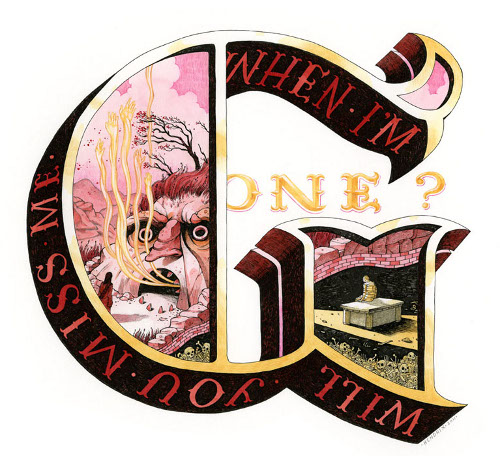
All artwork and images used with permission of John Hendrix.
A BOY CALLED DICKENS. Copyright © 2012 by Deborah Hopkinson. Illustrations copyright © 2012 by John Hendrix. Published by Schwartz & Wade, New York. Images reproduced by permission of the illustrator.
NURSE, SOLDIER, SPY: THE STORY OF SARAH EDMONDS, A CIVIL WAR HERO. Copyright © 2011 by Marissa Moss. Illustrations copyright © 2011 by John Hendrix. Published by Abrams, New York. Images reproduced by permission of the illustrator.
JOHN BROWN: HIS FIGHT FOR FREEDOM. © 2009 by John Hendrix. Published by Abrams Books for Young Readers, New York, New York. Images reproduced by permission of the author/illustrator in this 2009 7-Imp post (and re-posted here). All rights reserved.
ABE LINCOLN CROSSES A CREEK. © 2008 by Deborah Hopkinson, illustration © 2008 by John Hendrix. Images posted by permission of Random House (re-printed from this earlier post). All rights reserved.
The spiffy and slightly sinister gentleman introducing the Pivot Questionnaire is Alfred, © 2009 Matt Phelan.
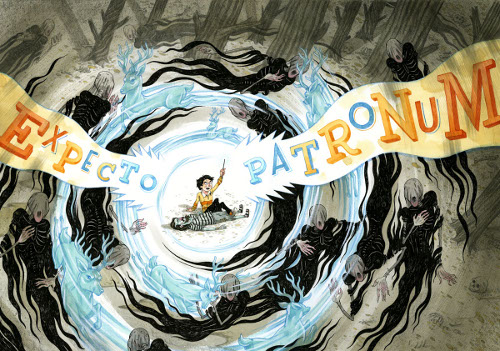
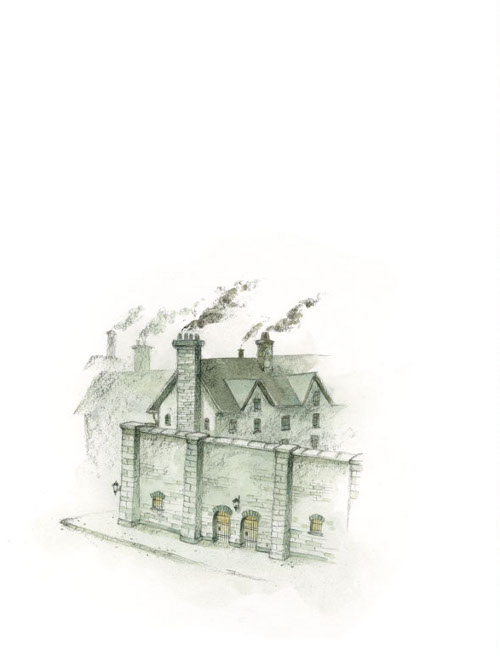
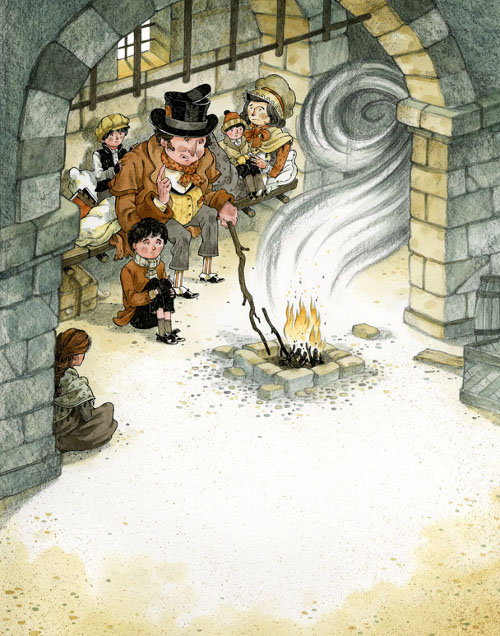

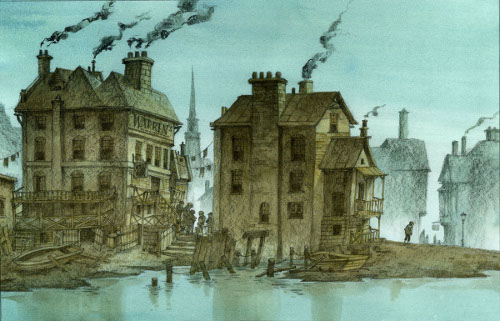



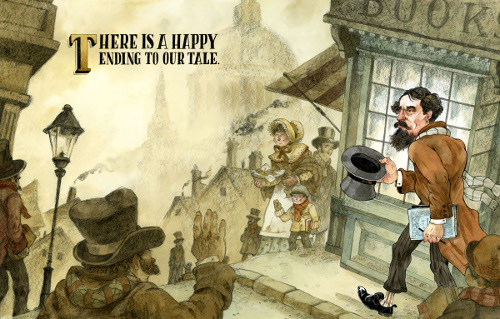


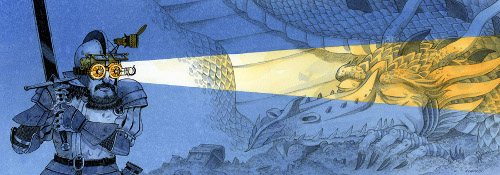
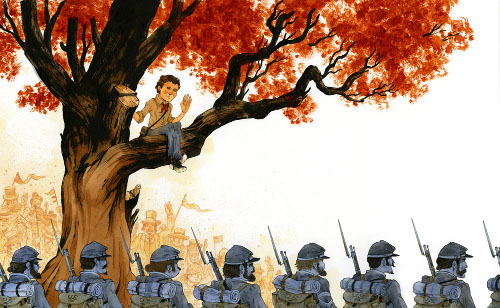
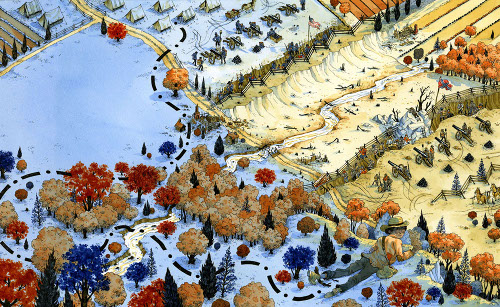
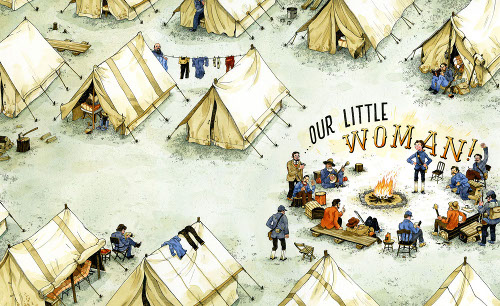
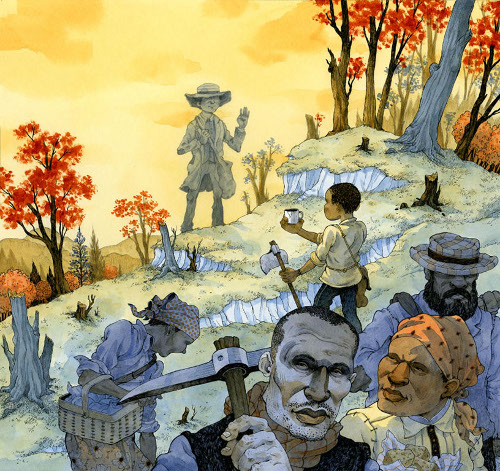

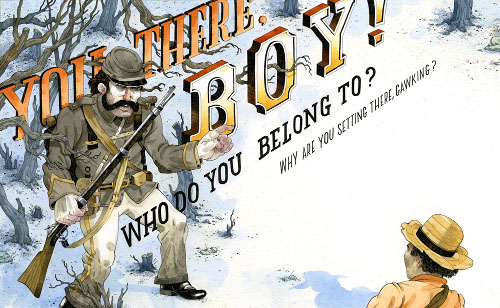
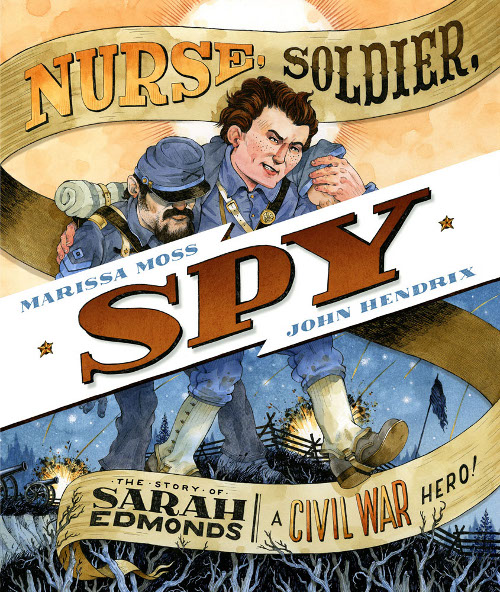
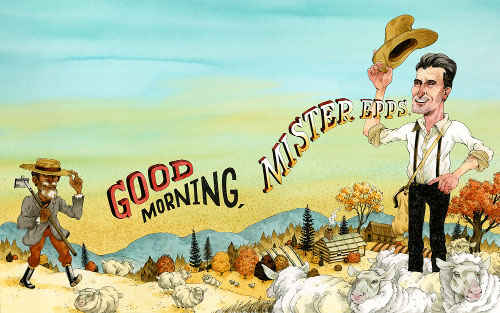
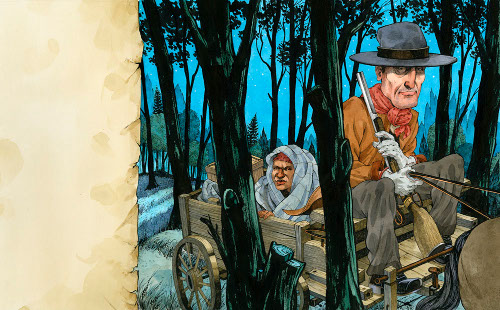
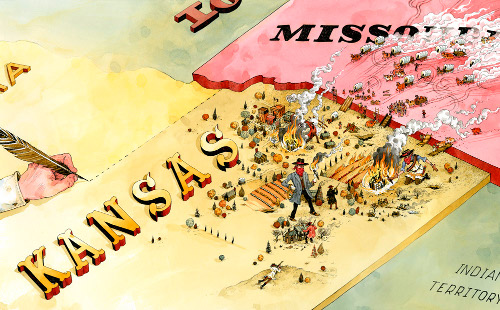
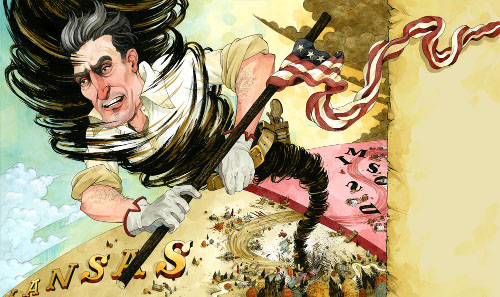
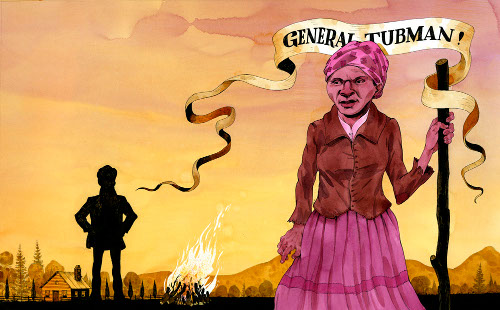


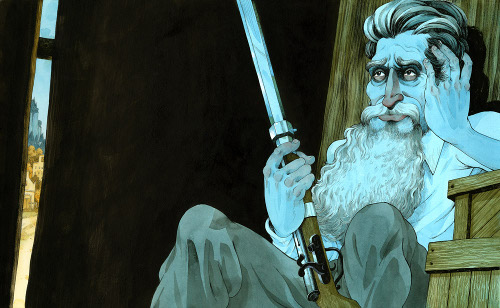

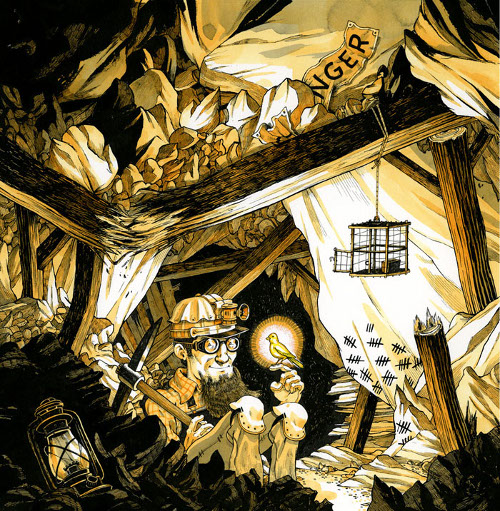

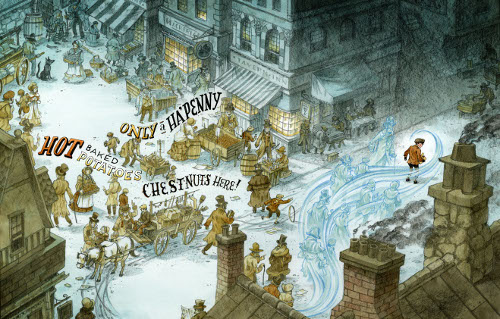
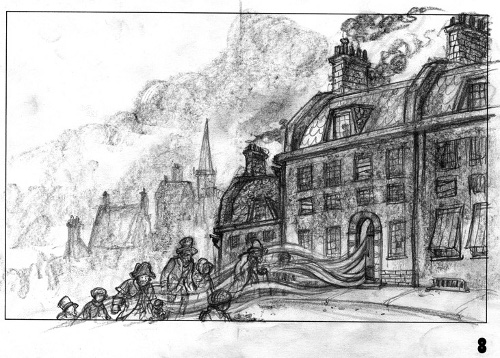
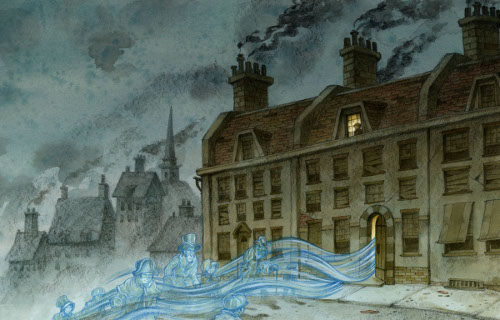
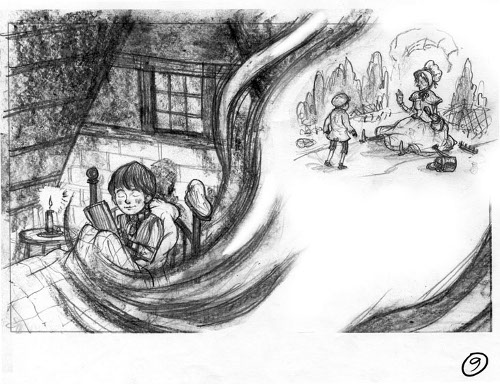
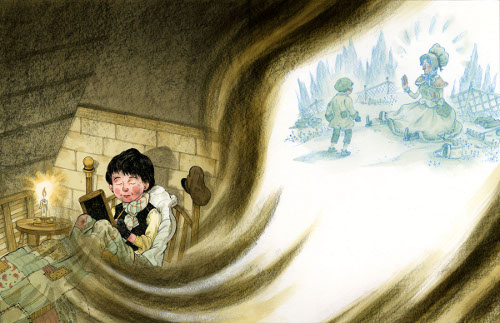

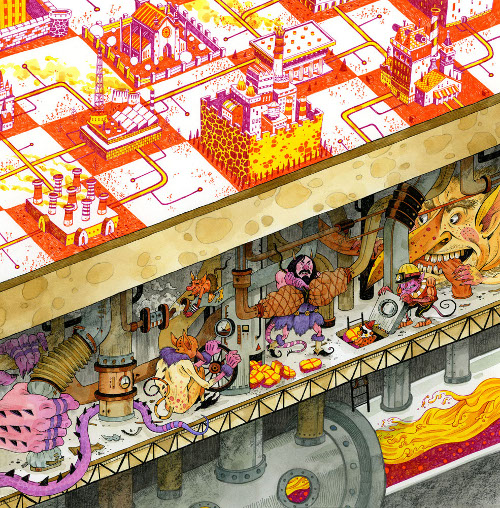
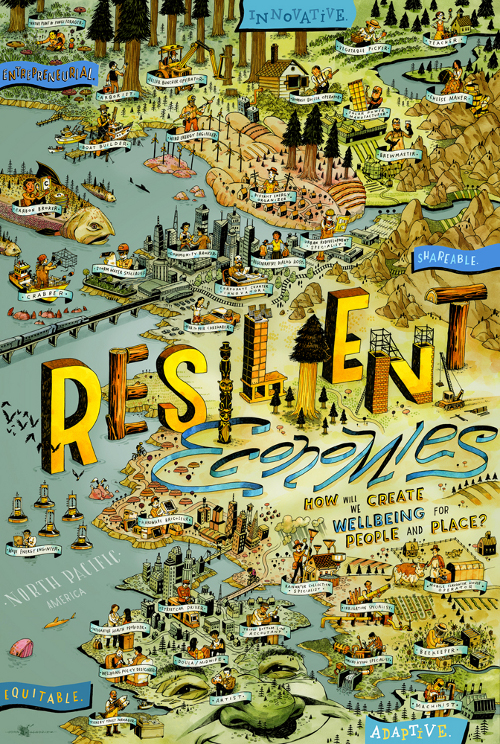


A Boy called Dickens just got moved to the top of my pile. And I’m off to snag copies of the others too. I just love these interviews, Jules. Getting to know these amazing authors and illustrators adds a new dimension to their works. It heightens the conversations I have with my students when talking about their books. Thanks John for your delightful conversation and comments.
Thanks, Margie! It makes me particularly happy that the interviews are enjoyed by students and helpful to them.
Hope you enjoy the books … John has a style all his own.
His imagery is so exciting–what masterful use of perspective and staging! I’m bookmarking this post. Awesome work!
Abe Lincoln Crosses A Creek…that’s a beauty! The boys checked that out from the library weeks ago and LOVED the illustrations!! Kid-approved!!
Wowie wow wow! What a way of bringing history to life. I love the drawing inspired by son Hendrix’s work.
What fantastic art! Exciting. Thanks for this.
I remember John when he was my student in high school. What an interesting, talented, creative and joyful person. So happy to see that his potential is being achieved.
Love this stuff. Especially (you will not be surprised) all the big complicated images with little fiddly bits going on in every last tiny corner.
And, Jules — for some reason, I pictured you laughing out loud at the idea (and the cover) of the Bad Unicorn book. 🙂
John: YOU KNOW ME WELL. I love that cover!
And I thought you’d dig his work ….
I didn’t realize John had done that Polly Horvath cover. Nice. I love his imagining of Harry Potter, too.
Just started following your blog and am amazed at the depth of this interview and posts in general. Thanks for the insights…
Aaron
I’ve always love d John’s work,especially his sketchbooks. You can just tell he loves to draw. Thanks.
[…] the Fall, my collection of poems about our presidents, Rutherford B., Who Was He?, illustrated by John Hendrix, will be published by […]
[…] new picture book, McToad Mows Tiny Island (Abrams, September 2015), illustrated by John Hendrix. That will be here […]
[…] here about Tom Angleberger’s McToad Mows Tiny Island (Abrams, September 2015), illustrated by John Hendrix. Today I’ve giving a peek inside the book. If John Hendrix’s art doesn’t wake you […]